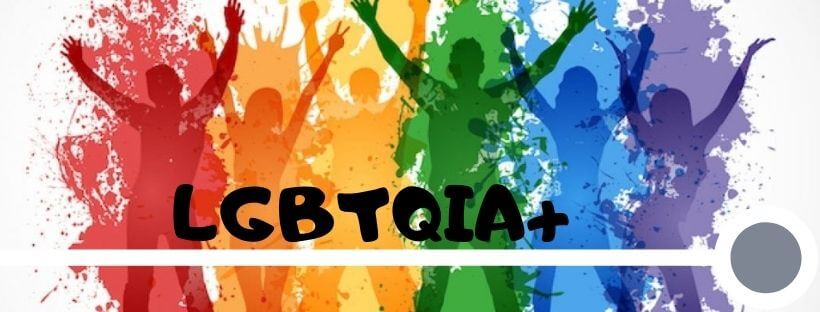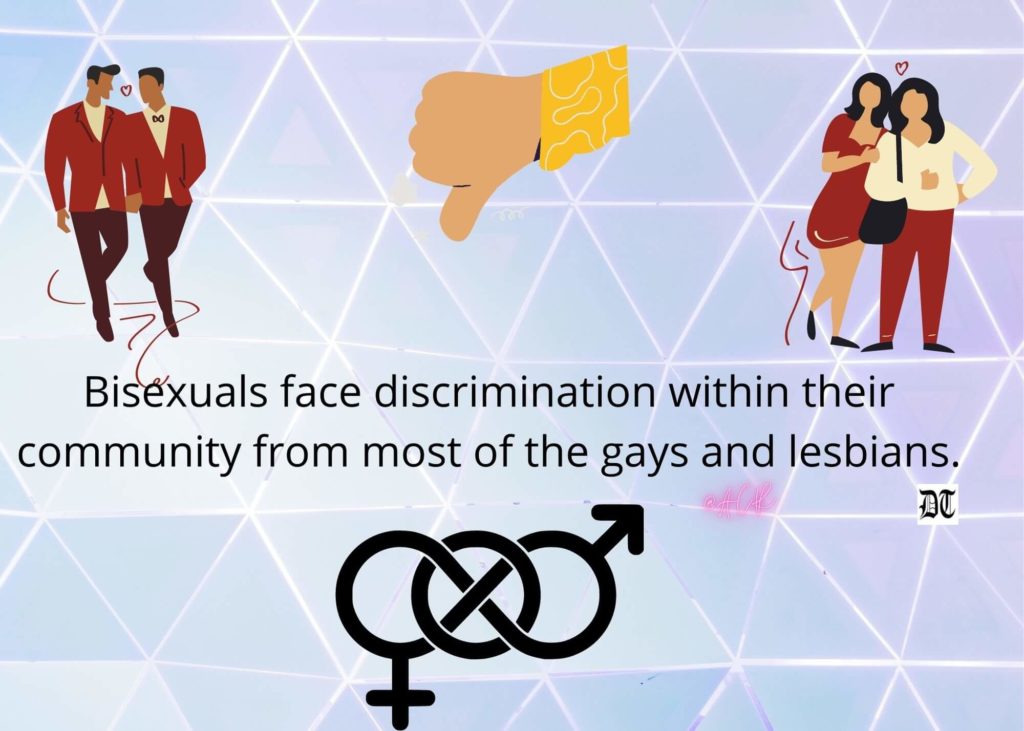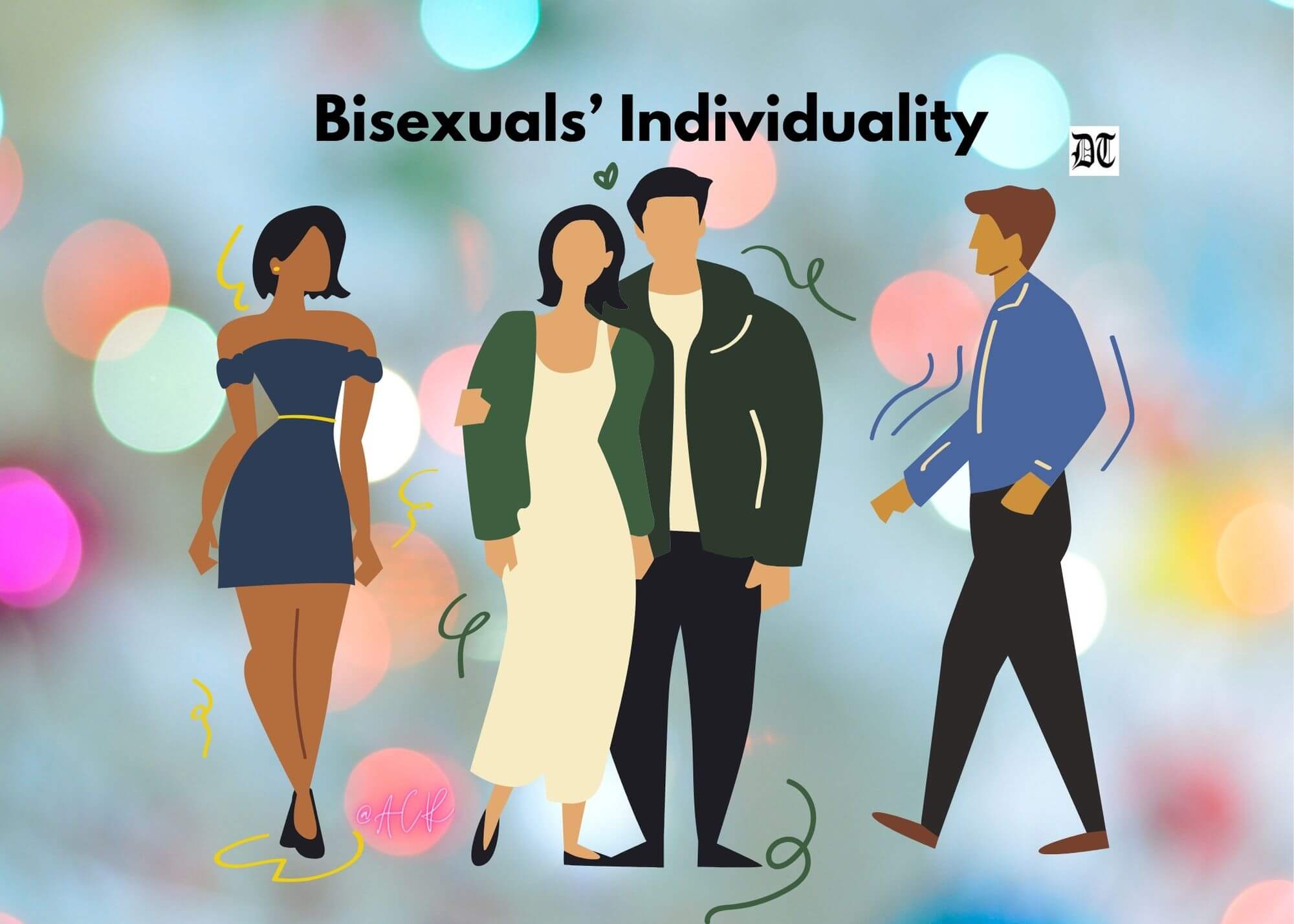Reading Time: 3 minutes
Shormita takes a hard look at the individuality of the bisexual people. An exclusive for Different Truths.

The bisexual people have their own individual struggle in their lifespan. It has been found that the bisexual constitutes the largest section of the LGBTQIA+ community. They have faced so many hurdles within themselves, which makes them quiet and suppressive. They keep their sexual preference private, even if they are not likely to disclose their identity to their respective partners. The layer of secrecy creates an inner turmoil within their mind. And such a mental state develops into severe mental illness like nervous breakdown, depression, anxiety attacks, etc.
Bisexuals can develop physical intimacy with both the genders at the same time. According to the report of Centre for Disease Control and Prevention (2016), 5.5% of women and 2% of men are found to be bisexuals. It is very awful to witness that the bisexuals receive negativity and negligence from both gay and lesbian people along with the hetero-sexual people in society. It is often seen that they are mis-representated in the media, for example, the character of Umang in Four More Shots Please! can be seen as a bisexual woman. But somehow her character has witnessed a fall out of being a bisexual; she turned out to be a lesbian in a later half. Although, she has developed physical relationships with men as well in the series. Thus, her character is quite confusing for the audience and it broadens up the misconception towards bisexuals in society.
According to the report of Centre for Disease Control and Prevention (2016), 5.5% of women and 2% of men are found to be bisexuals.
The bisexual person has a mixed sexual orientation. Using the term ‘mixed’ means one’s sexual preference changes at a time for the same gender or opposite gender. But commonly we have seen that some girls’ shares very close relationship with their girl-friend, they often kiss each other on cheeks and hold hands – the society looks at it differently. While they have boyfriends at the same time and they share good intimate relationships with each other. Such kind of strange relations are so common in recent times. Moreover, one more significant fact has to be acknowledged that is the vocabulary transformation to address your partner. For example, girls out of love call their boyfriend/husband as ‘baby’; similarly they address their girl-friend as ‘baby’. Both the cases they use ‘baby’ to show their love and warmth, to which they love. These are some examples to show how bisexuality is mis-interpreted in our society.

Bisexuals are overshadowed under the umbrella of LGBTQIA+ community as they face discrimination within their community from most of the gays and lesbians. They do not accept their bisexual individuality because a bisexual person has a mixed sexual preference. But it is true that a bisexual has a lot of option to fulfil their emotional and physical needs. It is very difficult to accept their gender identity to their family members. People still don’t understand the sexuality and gender of a bisexual person.
Bisexuals are overshadowed under the umbrella of LGBTQIA+ community as they face discrimination within their community from most of the gays and lesbians.
A lesser-known fact about bisexuals is that they have a separate pride flag to mark their individual existence. It was designed by Michael Page. It is in pink, lavender and blue colour; which increases their visibility in society. The top most ‘pink’ colour represents sexual attraction for the same gender, the lower most ‘blue’ represents sexual attraction for the opposite gender, and the middle most ‘lavender’ colour signifies sexual attraction for the same and opposite gender. This means that bisexuals can blend into both the homosexual and heterosexual community.
References
‘Understanding Bisexuality.’ American Psychological Association. Published: November, 2017. www.apa.org/pi/lgbt/resources/bisexual
Vencill, Jennifer A & Tania Israel. ‘Shining a light into the darkness: bisexuality and relationships.’ Sexual and Relationship Theory: Vol 33 -2018, Issue 1-2, 1-5. DOI: 10.1080/14681994.2018.1416826.
Visuals by Different Truths












